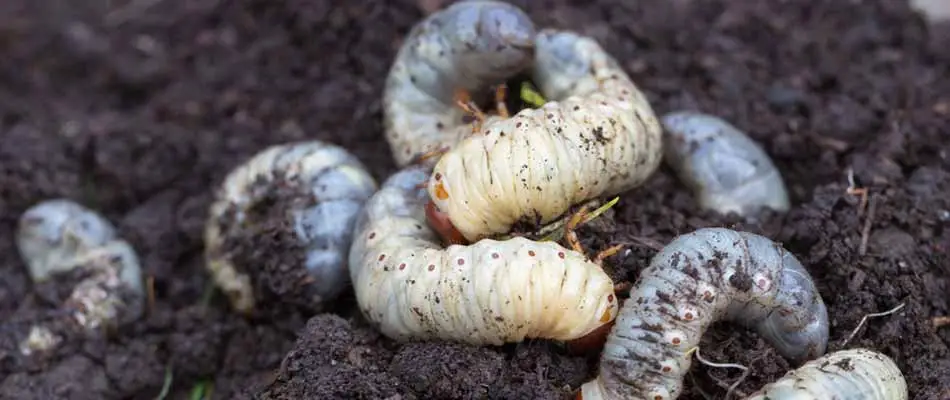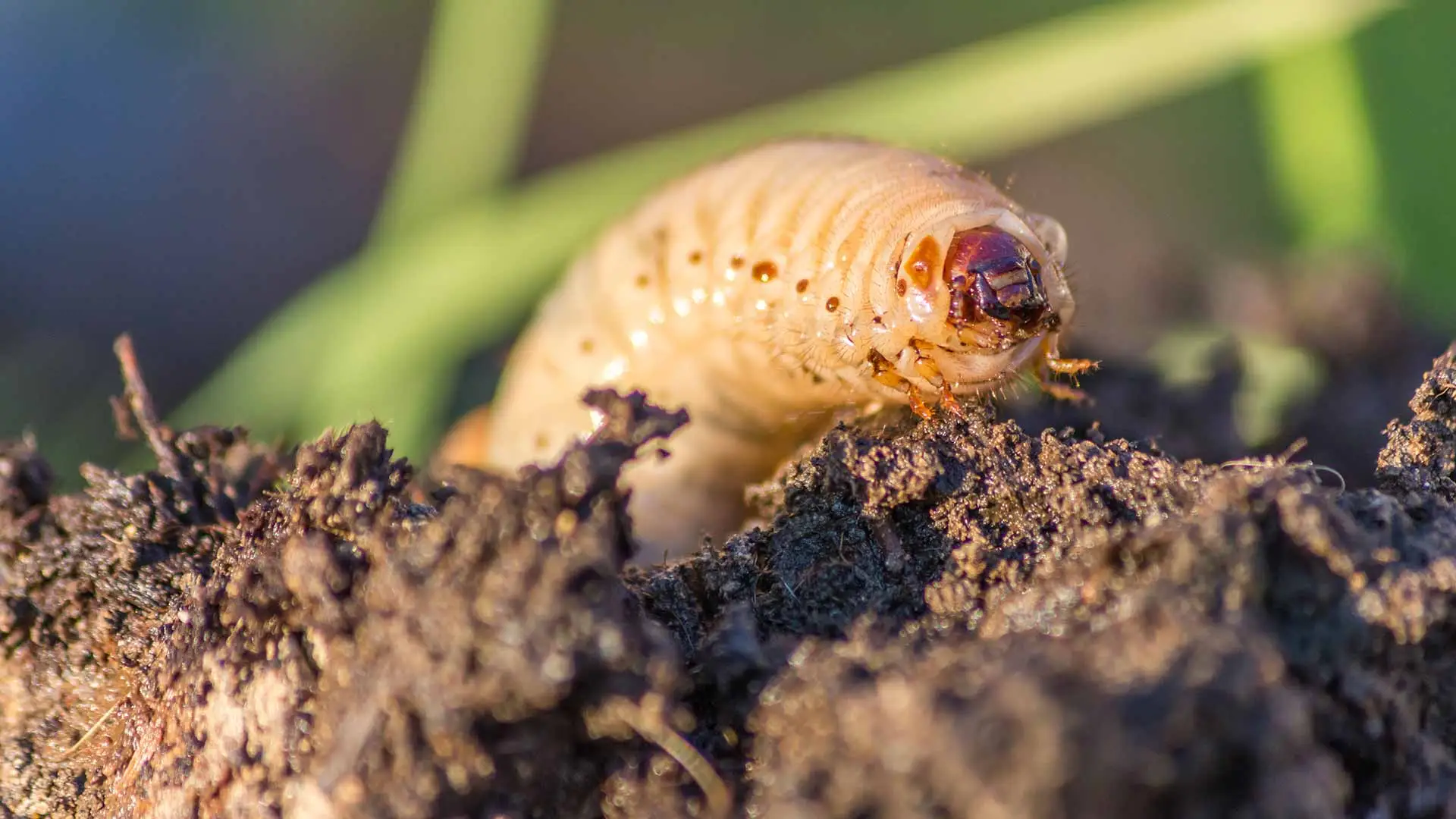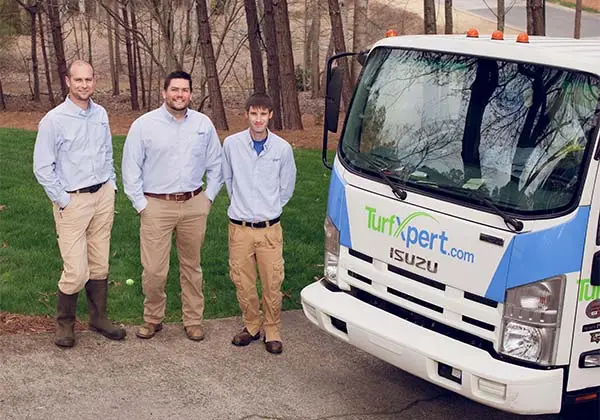You’ve probably seen small, squishy, white grubs in your lawn before, or you may have found them when moving rocks or other objects around your yard. Unfortunately for Woodstock, Roswell, Alpharetta and surrounding Georgia areas residents, these grubs are a common lawn and landscape pest that can cause unsightly brown patches in your grass.
Even if they gross you out, it’s a good idea to learn more about these insects, as well as how to prevent and remove them. Our team at TurfXpert, serving the north Atlanta suburbs, will go over both topics in this post.
The Life Cycle of Grubs

Grubs are the larval form of some beetles you’re probably already familiar with—namely the June bug and Japanese beetle. In Georgia, these grubs do the most damage to your lawn during the spring and fall months, following the beetle’s life cycle. During the summer months, the adults emerge from the ground to feast on the plants in your garden, at which time they also mate and lay eggs in the ground.
These eggs develop through the summer and into fall when they finally hatch into those familiar grubs. The grubs feast on the grass root system beneath your lawn throughout the autumn months, hibernate through the winter, then awaken again in the spring. When spring comes, these grubs will continue to eat for a while, storing up energy for when they pupate into adults.
Unfortunately, because these grubs feed on the roots beneath your grass, they can cause irreparable damage to the lawn itself. During an active infestation, you might see any of the following warning signs:
- Brown, dried spots in your lawn
- Grass that peels away or rolls up from the ground easily
- More of the grub’s natural predators tearing up your lawn than usual, such as birds, raccoons, and moles
- Uncharacteristic sponginess in the ground, especially in well-watered lawns
However, just because your lawn has grubs doesn’t mean you have an active infestation. These beetles are a member of many ecosystems around the world, including Georgia lawns. As a general rule of thumb, fewer than five grubs per square foot is regular and healthy, though sometimes healthy, thriving lawns can support up to nine per square foot.
How Does Our Team Treat Grubs?
The first part of treating a grub infestation involves determining if you have a grub problem in your neighborhood or region. You can check for grubs by removing a patch of your lawn during late summer when the grubs are beginning to hatch. However, even if you haven’t checked yourself, you can call us if you see other signs and suspect that something may be going on.
The chemical treatments we’ll use to treat the infestation will depend upon how advanced the infestation is and the time of year. For example, if your grub levels are borderline or relatively under control, we can schedule preventative treatments during the summer to target them as they hatch.
However, if your grub problem is more extreme, we can also couple preventative treatments with post-emergent treatments that will target the bugs at the appropriate stage in their life cycles, whether that’s the adult beetle, the grub, or the egg.
Call TurfXpert Today to Schedule a Consultation With One of Our Experts
While grubs aren’t all bad (as long as we keep them under control), they can quickly become a pest to lawns in the Woodstock, Roswell, Alpharetta areas of North Georgia. If you’re in need of grub control services, call us at (833) 444-8873 for an estimate.




Comments (0)
Thanks for your comment!
Thanks for your feedback! Your comments have been successfully submitted! Please note, all comments require admin approval prior to display.
Error submitting comment!
There is a problem with your comment, please see below and try again.